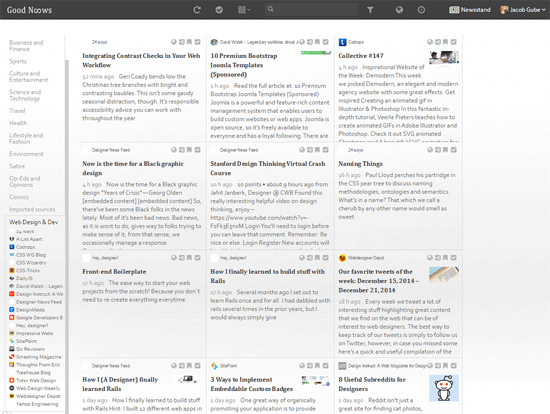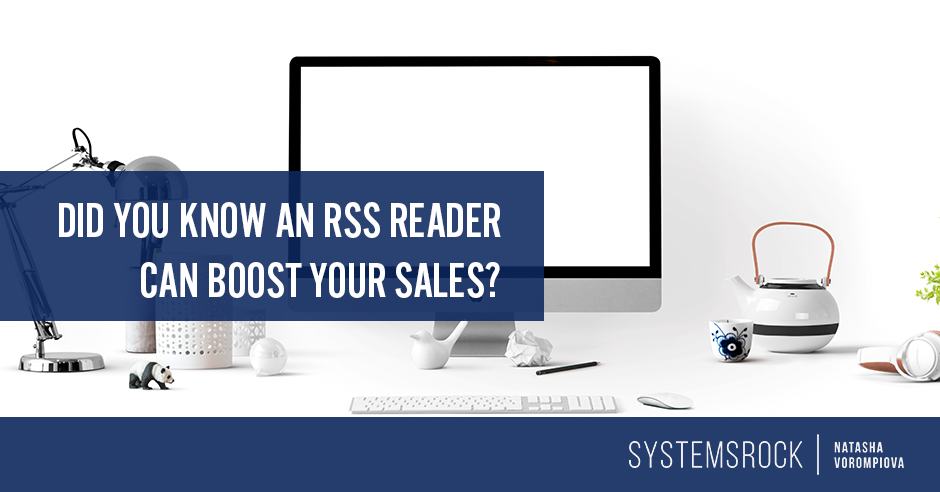

This will start up a development server where you can run your Netlify function at e.g. If you have the Netlify CLI installed, run netlify dev in your terminal at the root of your project.
#JAVASCRIPT RSS READER CODE#
Push the code to your repository, give it a minute to deploy to Netlify and hit the URL to your function in the browser ( Once you’ve fetched your data, built the string, created your XML document and sent it as “text/xml” to the browser, you can test out your Netlify function in two ways. Check it out:Ĭonst https = require ( " https " ) async function getPosts () From within a serverless function in Node.js we are going to build up a string, which we will return to the browser as “text/xml” content-type. This is also where you’ll find the generated XML file later.Ĭonstructing the XML document in JavaScript When those files are pushed to your repository, you’ll be able to navigate to to run the function. If you’d like to override the directory where you store your functions, you can do so with a netlify.toml file at the root of your project, but we’ll go with the default here. Setting up the files to enable the Netlify functionĪt the root of your project, create a functions directory, and add to it a new file called rss.js. Despite our brains being reduced to mush while not being able to fetch the data before the stream ended, I moved forward undeterred the next day, and I learned a few things in the process!

In the framework-free spirit of the application, I stubbornly set out to use Node’s native HTTP functionality in the Netlify function code, which would generate the XML file. I was fortunate to work with Shy on our first ever Contentful live stream together to learn about RSS and decide on the approach. If you want to go straight to the finished code, click here. Here’s the simplest form an RSS feed can take:Įnter fullscreen mode Exit fullscreen mode We used this article from as a guide to what we could include. Rather than setting up unnecessary routing in my single page application, I decided to build a Netlify function that runs on a specified URL at the time of the request to generate and serve the XML file to the browser or RSS reader.Īn RSS feed must contain a channel tag (which must contain a title, link and description) and item tags (which, at a minimum, must contain a title or description). To keep things simple, I opted for the same approach with the RSS feed and populated the XML file at run time. Thingoftheday is a static client-side application, which means the page is populated with data at the time of the request.

Note: This guide assumes you are hosting your microblog on Netlify and can make use of Netlify functions. In order to stay true to the no-frameworks philosophy of my first Contentful project - thingoftheday.xyz - I wanted to explore building the functionality myself. There are a variety of plugins available for different platforms and frameworks that generate RSS feeds from your content.
#JAVASCRIPT RSS READER FULL#
Check out the Contentful blog’s RSS feed here - it’s full of content! Its goal is to emphasize simplicity and usability across the World Wide Web. It’s beautiful!” – Stefan JudisĪn RSS feed takes the form of a standard XML (Extensible Markup Language) file, built of content and tags that define the content, and it looks a bit like HTML. ” there’s no algorithm “curating” the articles, and I can catch up in my own time. The myriad ways to consume content in 2021 can lead to content and sensory overload, so RSS feeds are great - Stefan Judis highlights the modern benefits of RSS in a recent Web Weekly newsletter. It allows people to subscribe to newly published content via an RSS reader so that they don’t need to manually check websites or channels. RSS (RDF Site Summary or Really Simple Syndication) was first released in March 1999.
#JAVASCRIPT RSS READER HOW TO#
So I set out to learn how to generate an RSS feed for my microblog that’s built with no front-end frameworks. After I built my first project with Contentful, I had no idea people would actually want to follow my content using their favorite RSS reader (thanks, Stefan Judis!).


 0 kommentar(er)
0 kommentar(er)
